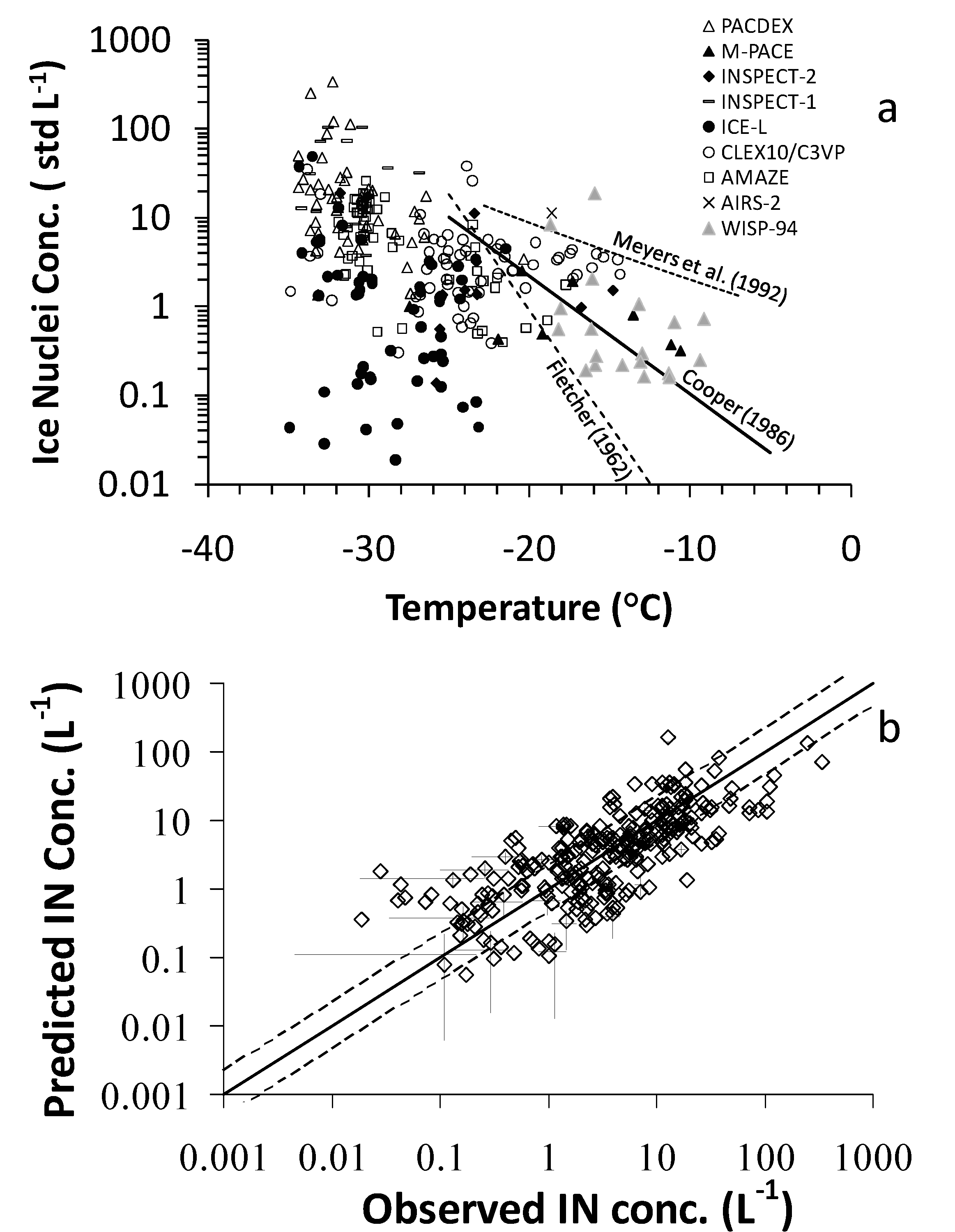Ice nucleation link to aerosols for global models
Submitter:
DeMott, Paul J. — Colorado State University
Liu, Xiaohong — Texas A&M University
Area of research:
Aerosol Properties
Journal Reference:
Science
The formation of ice in clouds is of vital importance to life on Earth, as ice formation is one of the key processes for precipitation initiation. Since ice nucleation is tied to the action of specific aerosol particles (ice nuclei: IN) representing only 1 in 10^5 or less ambient particles, natural and human impacts on ice nucleation can alter the energy and hydrological cycles. This study has addressed the urgent need for descriptions of complex ice formation processes that encapsulate the environmental dependencies of ice formation, but also include a link to aerosol properties. This paper describes an observationally based, yet simple, parameterization of IN number concentrations active for mixed-phase cloud conditions as a function of temperature and aerosol number concentrations (DeMott et al. 2010). Strong differences compared to a commonly applied ice nucleation parameterization without links to aerosol properties are demonstrated in simulations with the NCAR CAM3 (Community Atmospheric Model-3) global climate model with two-moment microphysics.
Impact
Ice nuclei number concentration data from the Colorado State University continuous flow diffusion chamber for activation conditions in mixed-phase clouds were assembled from nine field studies occurring at locations from the Arctic through the mid-latitudes to the Amazon. As much as three orders of magnitude variation of IN number concentrations were observed at any temperature, consistent with previous single-parameter IN parameterizations (Figure 1a). Using simultaneous measurements of total ambient aerosol size distributions, it was shown that a correlation exists between observed IN concentrations and the number concentrations of (non-sea salt) particles larger than 0.5 micron diameter (DeMott et al. 2010) that reduces the spread of potential errors in predicting IN concentrations as a function of temperature to less than a factor of 10, and predicts about two-thirds of values within a factor of two (Fig. 1b). This relation likely reflects a predominant role of larger particles such as mineral dusts as IN.
The developed parameterization was compared to the previous parameterization of Meyers et al. (1992) to examine the implications of including sensitivity to both temperature and aerosol concentrations determined from the expanded IN database in five-year global climate simulations using prescribed present-day aerosol fields. The new IN parameterization predicts large increases (10-30 g m^-2) in annually averaged liquid water path and stronger (5-10 W m^-2 more negative) shortwave cloud forcing at storm track and higher latitudes that is not completely balanced out by positive changes in longwave cloud forcing, such that a net, globally averaged cloud forcing change of 1.3 W m^-2 occurs. These changes are a consequence of reduced IN number concentrations in regions with low predicted number concentrations of non-sea salt particles larger than 0.5 micron diameter; the lower IN concentrations inhibit liquid conversion to ice in mixed-phase clouds in these regions, increasing high latitude cloud cover and reducing annual zonal mean downwelling shortwave radiation at the surface.
Summary
The developed parameterization significantly improves constraint and representation of aerosol impacts on cold clouds for immediate use in global climate simulations. Based on presented modeling studies, it appears just as important, for the accurate representation of cloud forcing, to properly simulate the lack of available IN as it is to simulate the presence of IN. Further improvements in parameterizations should follow from future improvements to IN measurement methods and the more challenging collection of enough data to account for variations in IN chemical composition that are not captured by the new parameterization.
Additional submitter: Anthony J Prenni


